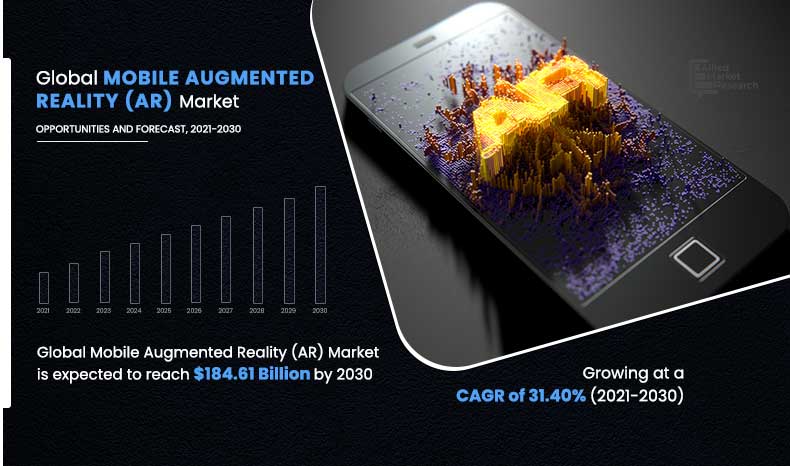The global mobile augmented reality (AR) market is projected to experience rapid expansion across various sectors, according to the latest research report published by Allied Market Research. The report, titled “The Mobile Augmented Reality (AR) Market Intelligence Report: Value and Volume 2021-2030,” provides a comprehensive analysis of market trends, key investment areas, value chains, regional landscapes, and competitive scenarios in the global mobile AR market.
The report predicts that the global mobile AR market will reach $184.61 billion by 2030, growing at a compound annual growth rate (CAGR) of 31.40% from 2021 to 2030. The increasing demand for mobile AR technology across industries is a significant driver of this growth.
Top manufacturers in the global mobile AR market, as analyzed by the report, include Qualcomm Inc., Microsoft Corporation, Samsung Electronics Co. Ltd., Blippar.Com Ltd., Google, Apple, Magic Leap, Groove Jones, Wikitude, and Marxent Labs. These companies have employed various strategies such as agreements, acquisitions, investments, and expansions to strengthen their market position and increase market penetration.
The report offers insights into the business performance, operating segments, developments, and product portfolios of each market player. It also utilizes Porter’s Five Forces Model and value chain analysis to provide a comprehensive understanding of the market dynamics.
Porter’s Five Forces Model reveals that the bargaining power of suppliers in the mobile AR market is low, while the threat from internal substitutes is moderate. The value chain analysis highlights that the major revenue in the market comes from the top segment, which is further detailed in the report. The advancement of technology has made research and development activities in the industry more cost and time-efficient, leading to increased innovation.
The comprehensive analysis provided by Porter’s Five Forces Model and other market analysis models helps businesses make informed decisions and accurately forecast market trends. These models assist in identifying investment opportunities and growth prospects in the mobile AR market.
The report also offers detailed segmentation of the global mobile AR market based on type, application, end-user, and region. It provides in-depth analysis of segments and sub-segments, allowing market players and investors to strategize their plans based on the highest revenue-generating and fastest-growing segments.
Regional market scope analysis helps companies understand the factors that drive and limit market growth in different regions. It provides valuable insights into regional trends, enabling companies to create region-specific plans. The report includes a deep-dive country-wise analysis of North America, Europe, Asia-Pacific, and LAMEA, along with key countries within these regions.
The research report from Allied Market Research benefits market players and investors by providing quantitative analysis of the current market and estimations through 2021-2030. It helps in understanding the strategies adopted by companies to gain market share and provides comprehensive analysis of factors that drive and restrict market growth.
Key benefits from this research report include:
- Quantitative analysis of the current market and estimations through 2021-2030
- Understanding of strategies adopted by companies to gain market share
- Comprehensive analysis of factors driving and restricting market growth
- In-depth analysis of market conditions across all geographic regions
- Competitive intelligence of leading manufacturers
- SWOT analysis of key market players
- Reliable insights through well-audited research methodology
- Application market analysis to understand opportunities in various fields
- Forecasted market trends and techniques
- Key developmental strategies adopted by top market players
The report segments the mobile AR market based on components, including hardware (3D cameras, sensors, processors, and others), software, and services. It also considers device types such as smartphones, tablets, personal digital


